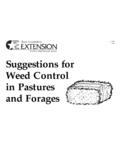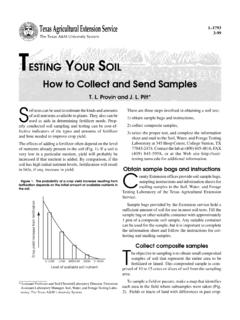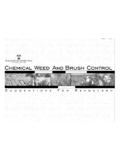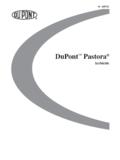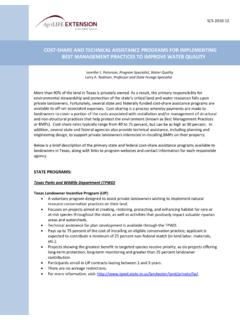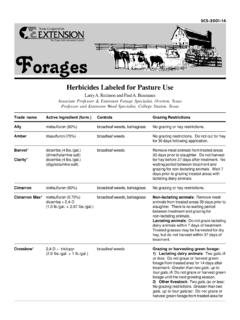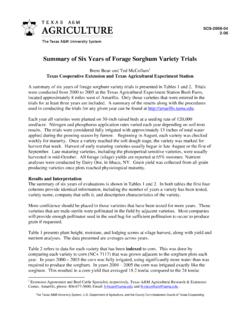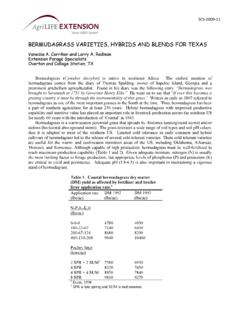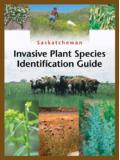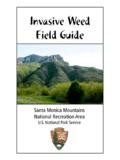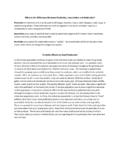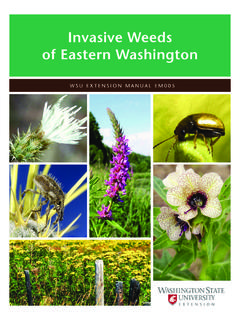Transcription of NTRODUCED LUESTEM RASSES Management on …
1 ERM-03610/17 Introduced Bluestem Grasses: Management on Native LandsM. K. Clayton, J. L. Foster, K. C. McCuistion, T. W. Teinert, and M. M. Lesak*Early land managers introduced nonnative grasses to Texas for use as groundcovers or as forage for livestock. As with many new ventures, the drawbacks of bringing new plants to an area are often unknown until the damage has been least 27 species of bluestems grow in Texas, only six of which are nonnative (Table 1). The remaining 21 are native to Texas and can provide valuable forage for livestock and/or habitat for wildlife as a member of a diverse plant community.
2 Examples of common native species are big bluestem, broomsedge bluestem, bushy bluestem, little bluestem, and silver bluestem. Bluestems in general are neither good nor bad because the species vary greatly. Land use goals often contribute to their value, especially if the land is used for cattle grazing only or for both cattle grazing and wildlife of nonnative bluestemsKing Ranch (KR) bluestem originated in China and was brought to California as early as 1917. The first Texas introduction was in 1924 at the Angleton Agricultural Research Service Substation, a division of the Department of Agriculture (USDA).
3 In 1939, the Texas Agricultural Research Service named the plant yellow beardgrass and released the seed for commercial production in 1949. The grass was used in rangelands and pastures and for erosion control and revegetation (Fig. 1).Between 1924 and 1937, the plant was introduced to the KR, where the Soil Conservation Service (now USDA Natural Resources Conservation Service) increased it for distribution; it is likely the source of present seed. KR bluestem and yellow beardgrass are indistinguishable and considered to be the same plant.
4 Kleberg bluestem originated in South Africa. In 1939, it was found growing with KR bluestem on the King Ranch. A Soil Conservation Service nursery in San Antonio, Texas, increased the seed and released it around 1944. Kleberg bluestem was developed for pasture forage, hay production, and range reseedings. Each ecotype of KR (Fig. 2) or Kleberg bluestem may have been favored for traits such as cold or drought tolerance, forage yield, general stand persistence, soil adaptability, or precipitation requirements for optimal between the speciesIn the field, it is extremely difficult to differentiate between KR and Kleberg bluestem species, much less their ecotypes:Table 1.
5 Bluestems introduced in TexasSCIENTIFIC NAMECOMMON NAME(S)ECOTYPESB othriochloa bladhii (Retz.) S. T. BlakeAustralian bluestemCaucasian bluestemWW-BDahl bluestemBothriochloa ischaemum (L.) KengKing Ranch bluestemKR bluestemYellow bluestemGanada bluestemPlains bluestemWW-Iron Master bluestemWW-Spar bluestemKing Ranch bluestemBothriochloa pertusa (L.) A. CamusPitted bluestem Dichanthium annulatum (Forssk.) StapfKleberg bluestemRinged bluestemT-587 (PMT-587) bluestemPretoria 90 bluestemDichanthium aristatum (Poir.) bluestemAwned dichanthiumGordo bluestemMedio bluestemDichanthium sericeum (R.)
6 Br.) CamusSilky bluestem *Associate Professor and Extension Range Specialist, The Texas A&M University System; Associate Professor of Forage Agronomy, Texas A&M AgriLife Research; Research Professor, Texas A&M University Kingsville; Natural Resources Specialist, Texas Parks and Wildlife Department; and Graduate Research Assistant, Texas A&M University Kingsville2 Although Kleberg generally grows taller than KR bluestem, Management practices such as mowing can alter plant height and productivity. Kleberg bluestem has hairy stem joints (nodes) and more leaf material than does KR bluestem.
7 But KR bluestem can also have hairy nodes, and the amount of its leaf material varies. Kleberg bluestem is typically found in Central Texas and in South Texas along the Gulf Coast (Fig. 3), is air salinity tolerant and does best on loamy to clay soils. KR bluestem is common throughout Texas (Fig. 4), even in drier regions, and it grows well on rocky limestone hills and shallow or clay soils. Although both species response to Management appears to be similar, the application of Management practices may vary on different ecological with many introduced grass species, KR and Kleberg bluestems often grow in monocultures (Fig.)
8 5) or thick stands with only one or very few plant species present (Fig. 6). For livestock producers, a solid stand of introduced bluestems was appealing, especially given their ability to withstand heavy grazing and unfavorable weather. Unfortunately, many introduced bluestems including KR and Kleberg bluestems do not always provide adequate nutrition for livestock. These species were also seeded to decrease soil erosion along dams, spillways, and highway rights-of-way and in depleted rangelands. They were very effective for this , these bluestems can quickly disperse seed into nearby pastures, especially on exposed soil or during a drought.
9 They establish quickly and crowd out other species. Because of incidental seed movement and the grasses invasive nature, introduced bluestems are common in many areas where they were never seeded theoriesThree main approaches are used to manage invasive grasses on native lands: eradication, diversity Management , and passive Management . EradicationEradicating KR or Kleberg bluestem is difficult unless the grass was introduced only recently and in small amounts. To eradicate these grasses from even a single pasture, a land manager would have to begin intensive control efforts, replant, apply follow-up treatments continually, carefully choose the hay brought onto the property, and protect pasture borders.
10 To reduce the likelihood of these grasses returning to the property, the manager would need to allow only clean equipment or vehicles to enter the property, request a weed wash of equipment that had been on introduced grass fields, and carefully monitor for introduced bluestems along pasture managementAnother approach is to manage the land to encourage plant diversity and reduce the dominance of KR or Kleberg Figure 3. Kleberg bluestem distribution in Texas by county. Map source: Amanda AndersonFigure 4. King Ranch bluestem distribution in Texas by county.
